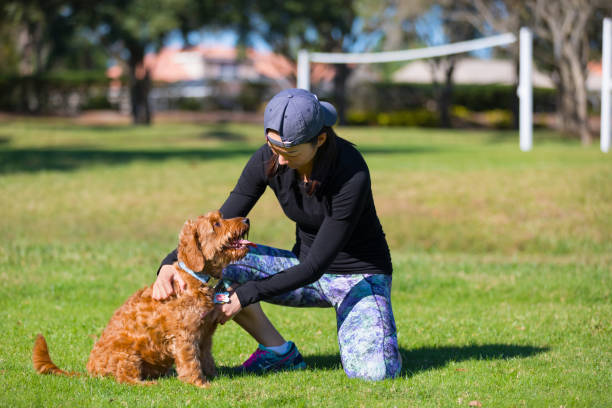Effective Pet Training
Best Pet Training Methods for Beginners and Experienced Owners
Training your pet is essential for their well-being and helps ensure a harmonious relationship between you and your furry friend. Whether you’re a beginner or an experienced pet owner, using effective training methods can make a significant difference in your pet’s behavior and responsiveness. Here’s a comprehensive guide to the best pet training methods, suitable for all experience levels.
1. Positive Reinforcement
Positive reinforcement is one of the most effective and widely recommended training methods. It involves rewarding desired behaviors to encourage your pet to repeat them.
- How It Works: Reward your pet immediately after they perform the desired behavior with treats, praise, or toys. The positive feedback reinforces the behavior and helps your pet associate it with a reward.
- Pros:
- Builds trust and strengthens the bond between you and your pet.
- Encourages a positive learning environment without fear or stress.
- Can be used for a wide range of behaviors and commands.
- Cons: Requires consistency and patience; be mindful of over-reliance on treats.
- Best For: All pets, including dogs, cats, and small animals. Particularly useful for teaching basic commands, house training, and addressing behavioral issues.
2. Clicker Training
Clicker training is a type of positive reinforcement that uses a clicker (a small device that makes a clicking sound) to mark the exact moment a desired behavior is performed.
- How It Works: The clicker is used to “click” at the precise moment your pet performs the desired action, followed by a reward. The click sound helps your pet understand which behavior is being rewarded.
- Pros:
- Provides clear and immediate communication with your pet.
- Can accelerate the learning process and improve accuracy.
- Useful for teaching complex behaviors and tricks.
- Cons: Requires carrying and using the clicker consistently; initial training may take some time.
- Best For: Dogs, cats, and small animals. Ideal for advanced training, trick training, and refining commands.
3. Lure and Reward
The lure and reward method involves using a treat or toy as a lure to guide your pet into performing the desired behavior, which is then rewarded.
- How It Works: Hold a treat or toy in front of your pet’s nose to guide them into the correct position or behavior. Once they perform the action, immediately reward them.
- Pros:
- Simple and effective for teaching basic commands and movements.
- Helps pets understand what is expected of them.
- Cons: May require the use of treats or toys to maintain the behavior long-term.
- Best For: Beginners and pets learning basic commands like “sit,” “stay,” or “come.”
4. Clicker Training with Shaping
Shaping is a technique where you gradually train your pet to perform a complex behavior by reinforcing small steps toward the final goal.
- How It Works: Use a clicker to reward your pet for successive approximations of the desired behavior. Start with simple actions and gradually increase the difficulty until the full behavior is achieved.
- Pros:
- Effective for teaching complex behaviors and tricks.
- Allows pets to learn at their own pace.
- Cons: Requires patience and time to shape behaviors gradually.
- Best For: Advanced training, trick training, and complex behaviors for all pets.
5. Crate Training
Crate training is a method used to teach your pet to view their crate as a safe and comfortable space, making house training and travel easier.
- How It Works: Introduce your pet to the crate gradually, using positive reinforcement to create positive associations with the crate. Provide treats, toys, and meals inside the crate to encourage your pet to spend time there.
- Pros:
- Aids in house training and prevents destructive behavior when unsupervised.
- Provides a secure and familiar space for your pet.
- Cons: Requires careful introduction and should never be used as a form of punishment.
- Best For: Dogs and cats. Particularly useful for house training and providing a safe space during travel or when unsupervised.
6. Leash Training
Leash training is essential for teaching your dog to walk calmly on a leash without pulling or lunging.
- How It Works: Use positive reinforcement to reward your dog for walking beside you on a loose leash. Start with short, distraction-free walks and gradually increase the duration and complexity.
- Pros:
- Encourages good walking habits and reduces pulling.
- Provides exercise and mental stimulation for your dog.
- Cons: Requires consistent practice and patience to address pulling or lunging behaviors.
- Best For: Dogs of all ages, especially puppies and dogs with pulling issues.
7. Socialization
Socialization involves exposing your pet to various people, animals, environments, and situations to help them become well-adjusted and confident.
- How It Works: Gradually introduce your pet to new experiences, using positive reinforcement to reward calm and relaxed behavior. Start with controlled environments and gradually progress to more challenging situations.
- Pros:
- Reduces fear and aggression toward new experiences.
- Helps pets adapt to different environments and situations.
- Cons: Requires careful management to ensure positive experiences and avoid overwhelming your pet.
- Best For: Puppies, kittens, and newly adopted pets. Essential for all pets to prevent behavioral issues and improve adaptability.
8. Boundary Training
Boundary training helps pets understand and respect boundaries within your home or yard.
- How It Works: Use visual markers, verbal cues, and positive reinforcement to teach your pet to stay within specific boundaries, such as off the furniture or within a designated area of the yard.
- Pros:
- Effective for managing behavior and creating designated spaces for pets.
- Can be adapted to various boundaries, such as furniture or outdoor areas.
- Cons: Requires consistent reinforcement and clear boundaries.
- Best For: Dogs and cats, particularly those with boundary-related behavioral issues.
Conclusion
The best pet training methods are those that suit your pet’s individual needs, your training goals, and your personal preferences. Positive reinforcement, clicker training, and other methods outlined here offer effective ways to teach your pet desired behaviors and strengthen your bond. Whether you’re a beginner or an experienced owner, these techniques will help you achieve a well-behaved, happy, and confident pet. Consistency, patience, and understanding are key to successful training and a fulfilling relationship with your furry friend.

